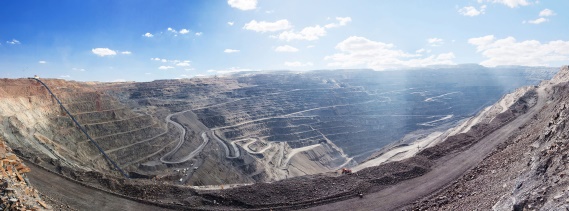The manual verification and assessment of recorded environmental monitoring data is both time-consuming and costly. But it is a requirement for any business enterprise that depends on accurate real time and continuous monitoring (whether it be for noise, water, air quality or any environmental monitoring requirement) to ensure it remains safe and compliant. This includes companies operating in the mining, defence, manufacturing and transport sectors, to name just a few, where having the right business intelligence tools on hand to manage risk and operate more efficiently is a necessity.
Intelligent machines that learn from one another
Imagine if the intelligent machines you are using to monitor the environment right now could not only talk to one another, but also learn from one another and help with the decision-making process. Sounds a bit like science fiction doesn’t it?
But that’s precisely what is now possible following years of research, development and testing by leading Australian environmental monitoring and systems integration company, Novecom. The Newcastle based company has developed a Smart Intelligence Monitoring Network, which they have named by its acronym, SIMN (pronounced ‘Simon’). Utilising Artificial Intelligence (AI) technology, SIMN is capable of evolving its behaviour in response to changing contexts. While AI as a computer science is nothing new, its application is growing rapidly and SIMN is a great example of this. The network essentially enables Novecom’s existing environmental monitoring devices out in the field to ‘talk’ with one another, learn from their environment, and implement that learning to improve your company’s decision making process.
Environmental Scientist and Novecom Managing Director Jeremy Pola said, “If we take the example of noise monitoring, SIMN works in real time to characterise a specific noise source, communicate with one of its neighbouring monitoring systems to confirm the source of the noise and then condense that information into an alert to help steer the decision-making process in the right direction.”
A virtual assistant that gets smarter over time
What is perhaps most exciting about this new technology is the fact that the network has the capability to get smarter over time. Using artificial neural networks, which is the analysis tool built in to SIMN, the network continues to learn and build a growing library of whatever it is programmed to measure. In the case of noise, the system will identify a variety of noises within the environment, assess the source of the noise (based on what is programmed into it and what it has learnt) and alert the relevant personnel by text or email only when necessary.
“This way, if the noise is deemed to be within the required levels or identified as a non-problematic noise source – such as a dog barking – the system will not waste anyone’s time by sending an alert when no action is required,” said Pola.
Indeed the technology is such that the system is capable of matching what it is looking for. This has potential for other types of environmental monitoring, for instance the monitoring of soil and climatic conditions in intensive and broad acre crop production systems where water efficiency is one of the key operating parameters. “SIMN can guide your application of water based on a network of soil moisture, temperature, rainfall and evaporation sensors communicating with one another,” said Pola.
Novecom is a recognised leader in the acquisition, reporting and integration of environmental and business data for a range of industry sectors, and is an integral part of Emergent Group. To enquire about SIMN and its potential applications in your organisation, contact Jeremy Pola at Novecom on (02) 4924 5460.
